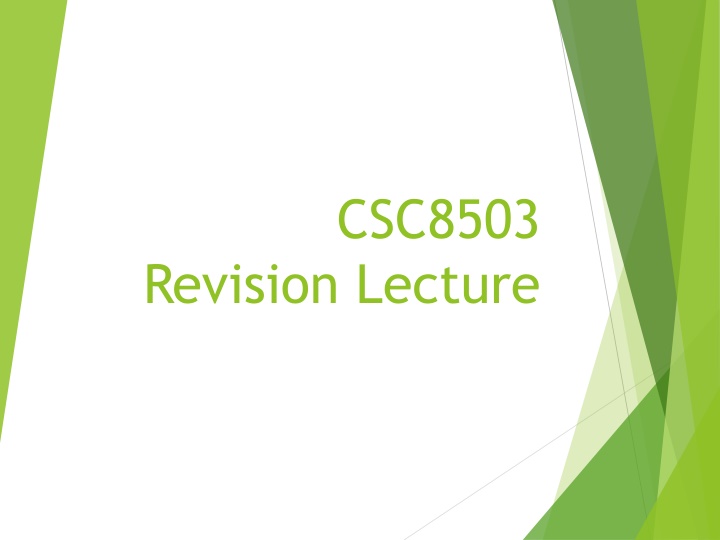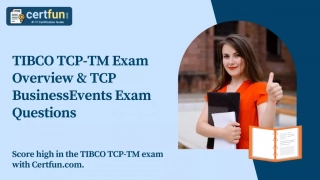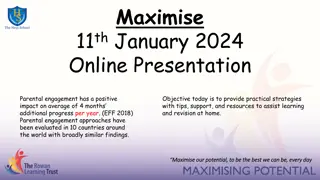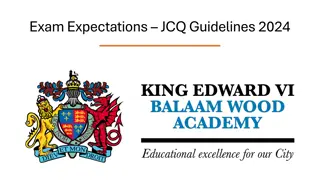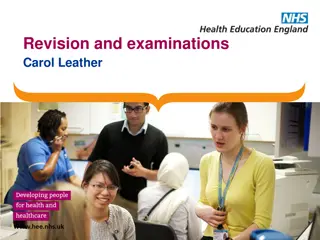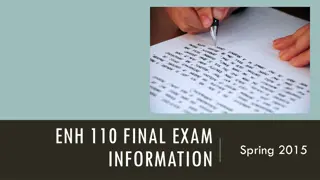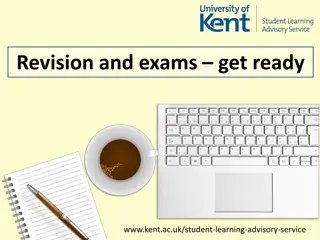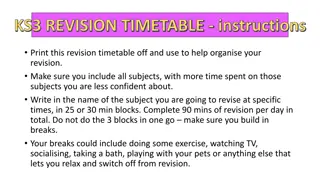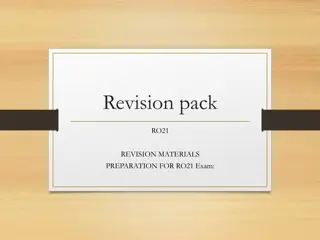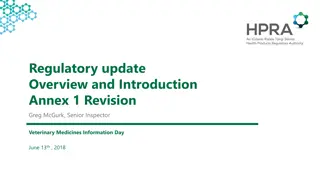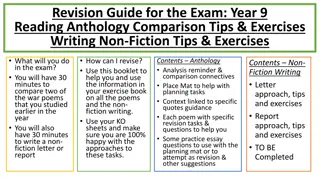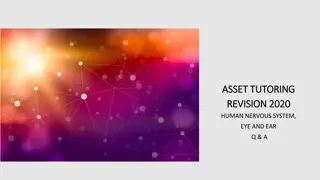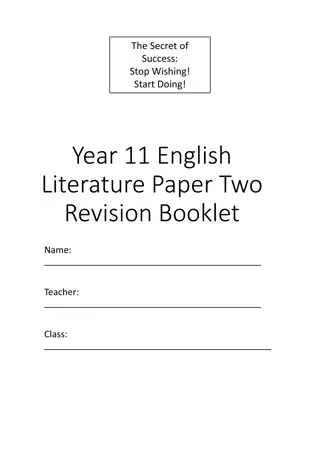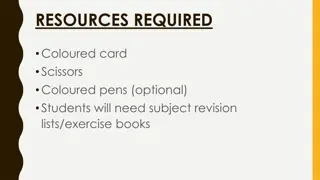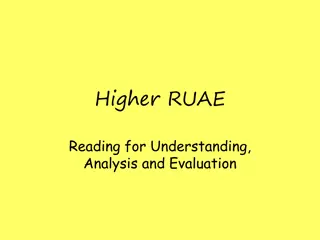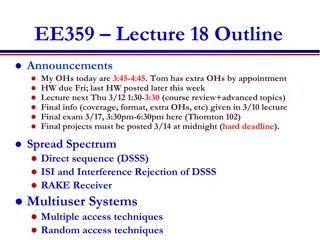CSC8503 Revision Lecture Overview - Exam Key Features and 2015/16 Exam Questions
Discussion of key features of the paper, review of last year's questions, exam details, and analysis of 2015/16 exam question 1. Detailed exploration of elements like Finite State Machines (FSM), states, transitions, trigger conditions, and specific details on the number of states, connections, and trigger conditions. Important insights for answering exam questions effectively.
Download Presentation

Please find below an Image/Link to download the presentation.
The content on the website is provided AS IS for your information and personal use only. It may not be sold, licensed, or shared on other websites without obtaining consent from the author.If you encounter any issues during the download, it is possible that the publisher has removed the file from their server.
You are allowed to download the files provided on this website for personal or commercial use, subject to the condition that they are used lawfully. All files are the property of their respective owners.
The content on the website is provided AS IS for your information and personal use only. It may not be sold, licensed, or shared on other websites without obtaining consent from the author.
E N D
Presentation Transcript
CSC8503 Revision Lecture
Overview We ll first discuss some key features of this year s paper. Then, we ll review the questions in last year s paper, highlighting the elements we d need to consider when answering them We will NOT go through model answers for each question
Exam Key Features You are permitted to take an approved calculator (see University Regulations, or ask 8thFloor Reception if you need clarification) Exam is out of 100, and you have 2 hours in which to complete it ALL sections of ALL questions should be attempted there are no optional questions The paper is divided into TWO parts (A and B) questions within each part should be attempted in order The parts are NOT equally weighted keep that in mind when managing your time in the examination itself
2015/16 Exam Question 1
2015/16 Exam Question 1
Question 1a What do we need to consider? Key elements of a FSM are:
Question 1a What do we need to consider? Key elements of a FSM are: States (duh) Transitions Trigger Conditions
Question 1a How many states? Which states are connected by a transition? What are those conditions?
Question 1a How many states? 6 (including destroyed/left environment) Which states are connected by a transition? E.g., Following Route would connect to Move to Red NPC What are those conditions? Following Route would connect to Move to Red NPC if a Red NPC is present within distance R
Question 1a Tricky details? Remember the question stipulated the Blue NPC so the answer would anticipate trigger conditions explicitly stating Red NPC for the distance checks, etc. The Dead state people often forget that one The Dead state is the only state that doesn t need an exit condition (e.g., it s the only state you can reach where you don t have the possibility of changing state further)
Question 1b Well, what benefit does this sort of hysteresis provide? And what happens if we screw up and have J less than R? Second part is meant to make you think about the actual implementation consequences
Question 1c Notice that the question s scenario evolves over the course of the question. This is especially true in this year s paper, and is the reason you ought to consider the elements of a Part in order.
Question 1c Need to consider the fact that we re no longer looking at a point-in-a-circle check Instead, we re doing a circle-circle check (sphere- sphere in two dimensions) Rewrite the S-S check to reflect this
Question 1d) So, curveball this is a physics question INSIDE an AI question how devious. Meant to make sure you get how the elements relate to each other. Once you get over the initial shock, consider what you ve memorised about world-space partitioning, and apply it to the scenario. Thoughts?
Question 1e) And again, curveball. Now we re talking about the GPU lectures in an AI question. Again, testing your ability to understand the principles, not mnemonics. Is this suitable for GPU compute? If so, why? If not, why not?
Question 2a Gift marks if you ve even glanced at the course content.
Question 2b 2b needs you to think what s a pi ata? What elements are important in a pi ata simulation? Thus, which of these two approaches can best provision those elements?
Question 2c This is a simple sphere-plane intersection check. Explain the equation, and what each element means. What would happen if this were a polyhedral pi ata rather than a sphere?
Questions 2d and 2e Again, gift marks if you ve read the handout what s the weakness of sphere-plane? How is plane defined? Trick question.
Question 2f Need to consider each element of the spring equation What does it mean in this example? E.g. F is the force applied to the pi ata (because the wall is immovable) V is the velocity of the pi ata at the moment the collision occurs And so on
Question 2g This is bookwork from the handout it s one of two inertial tensors you re meant to be able to recall What s the other?
Question 3a Part i is testing your understanding of SAT what needs doing to the pi ata for SAT to work? Part ii is ensuring you can explain why that needs to be the case recall the diagram in the handout, showing the problem.
Question 3b This is bookwork the answer is in the handout. What is the condition that needs to be satisfied?
Questions 3c and 3d Part c is more bookwork. And part d is a trick question what s our sphere-sphere edge case for SAT?
Question 4 Now, this is where things get fun. Open up the PDF if you haven t already, and let s walk through this question.
